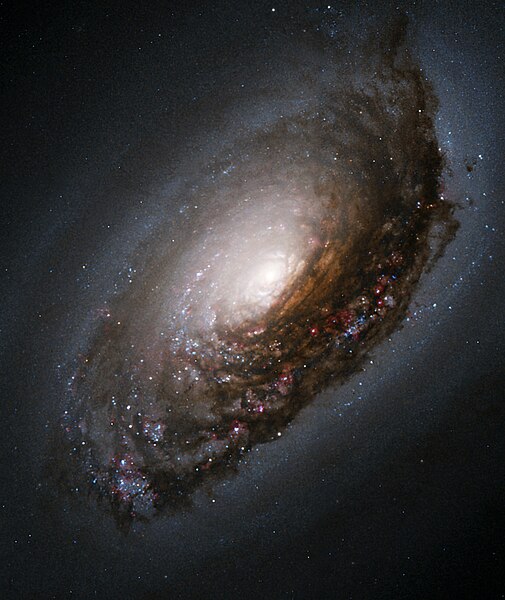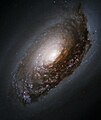Vaizdas:Blackeyegalaxy.jpg

Šios peržiūros dydis: 505 × 600 taškų. Kitos 3 rezoliucijos: 202 × 240 taškų | 404 × 480 taškų | 897 × 1 065 taškų.
Didesnės raiškos iliustracija (897 × 1 065 taškų, rinkmenos dydis: 774 KiB, MIME tipas: image/jpeg)
Rinkmenos istorija
Paspauskite ant datos/laiko, kad pamatytumėte rinkmeną tokią, kokia ji buvo tuo metu.
| Data/Laikas | Miniatiūra | Matmenys | Naudotojas | Paaiškinimas | |
|---|---|---|---|---|---|
| dabartinis | 12:46, 2 birželio 2005 |  | 897 × 1 065 (774 KiB) | CWitte | This image of M64 was taken with Hubble's Wide Field Planetary Camera 2 (WFPC2). The color image is a composite prepared by the Hubble Heritage Team from pictures taken through four different color filters. These filters isolate blue and near-infrared lig |
Paveikslėlio naudojimas
Paveikslėlis yra naudojamas šiuose puslapiuose:
Visuotinis rinkmenos naudojimas
Ši rinkmena naudojama šiose viki svetainėse:
- Naudojama af.wikipedia.org
- Naudojama ar.wikipedia.org
- Naudojama ast.wikipedia.org
- Naudojama az.wikipedia.org
- Naudojama be.wikipedia.org
- Naudojama bg.wikipedia.org
- Naudojama bn.wikipedia.org
- Naudojama br.wikipedia.org
- Naudojama bs.wikipedia.org
- Naudojama ca.wikipedia.org
- Naudojama ce.wikipedia.org
- Naudojama ckb.wikipedia.org
- Naudojama co.wikipedia.org
- Naudojama cs.wikipedia.org
- Naudojama cy.wikipedia.org
- Naudojama de.wikipedia.org
- Naudojama diq.wikipedia.org
- Naudojama el.wikipedia.org
- Naudojama en.wikipedia.org
- Messier object
- Coma Berenices
- List of galaxies
- Portal:Astronomy/Picture/May 2005
- Portal:Astronomy/Picture/12 May 2005
- Portal:Astronomy/Picture/Week 48 2005
- User:ComaDivine
- User:Superfo
- User:Gilgamesh~enwiki/Favorite images
- List of spiral galaxies
- Portal:Solar System
- Portal:Solar System/WikiProjects
- User:Passargea/Favourite pictures/Space
- User:Logos/Hall of Galaxies
- User talk:Example/Archives/2008/April
- User:Mike YuHong Chen
- User:Stefania.deluca/sandbox
Žiūrėti visuotinį šios rinkmenos naudojimą.

